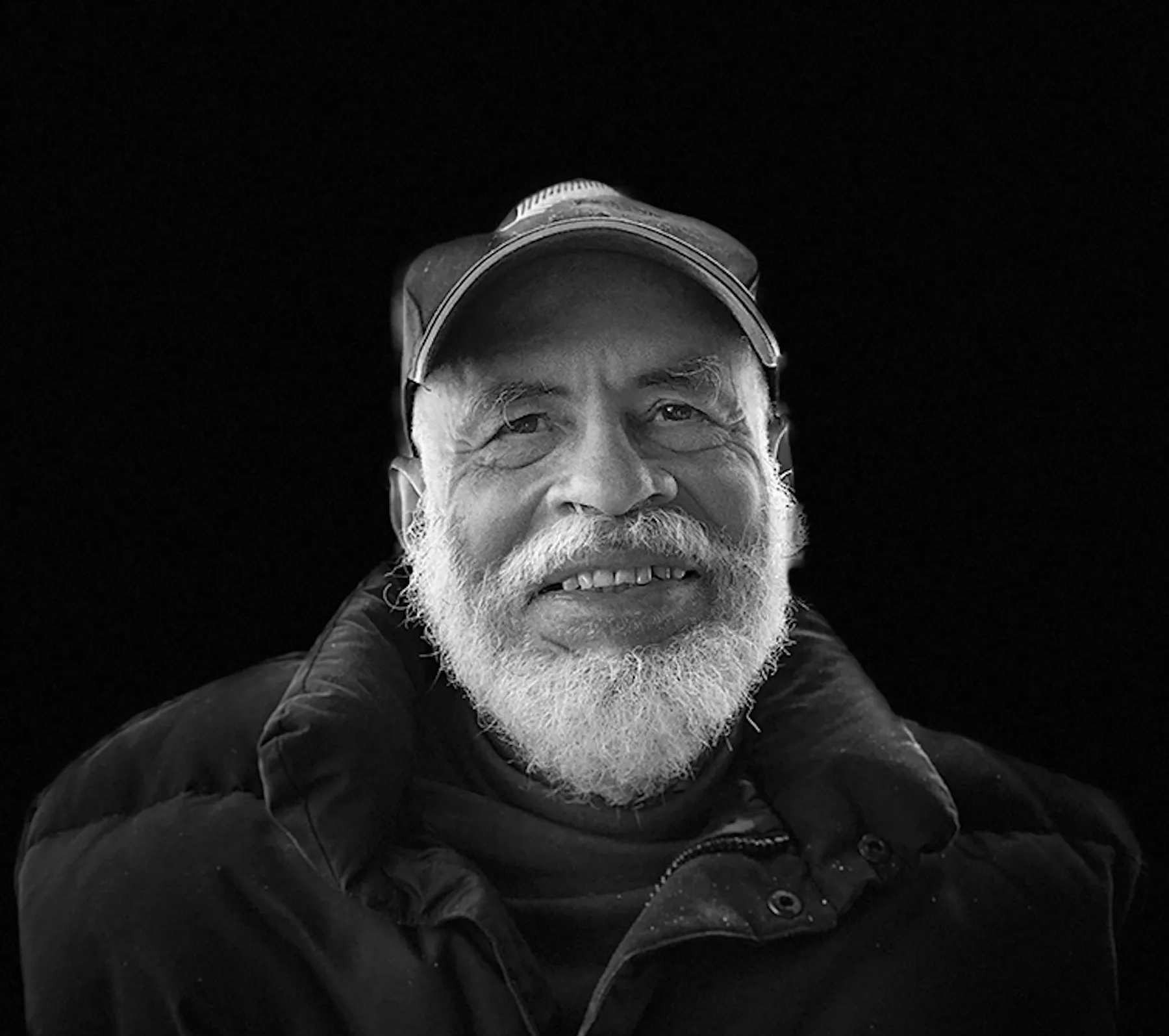Artist and gallerist Alonzo Davis, who championed Black American art and culture over a six-decade career, passed away in Hyattsville, Maryland on Monday, January 27 at age 82. Parrasch Heijnen gallery, which began representing him in 2021, confirmed his death.
The artist was born in 1942 in Tuskegee, Alabama, to parents Agnes Moses Davis, a librarian, and Alonzo Davis Sr., a psychology professor at the Tuskegee Institute campus, now known as Tuskegee University. In a 2021 interview for the Getty Trust Oral Histories Project, Davis recalled that he was inspired to pursue art by an architecture student who taught drawing at his elementary school, as well as his neighbor, a gentleman who painted with his mouth and toes due to paralysis. Davis’s parents split when he was 14, and he and his brother Dale moved with their mother to Los Angeles, where she pursued a graduate degree in Library Science at the University of Southern California (USC).

Davis attended integrated schools in LA and worked as a delivery boy, printer’s apprentice, and occasional illustrator at the Los Angeles Tribune, a Black-owned-and-published newspaper that primarily served local African-American communities. He attended Los Angeles City College before transferring to Malibu’s Pepperdine University, graduating in 1964 with a degree in art and education. Afterward, Davis enrolled in classes at USC in pursuit of a teaching certification and explored art therapy as a career. In the years following, he would teach at various locations including Manual Arts High School and Crenshaw High School.
In 1966, Davis embarked on a cross-country roadtrip with his brother in a green Volkswagen in 1966. The pair journeyed through the American South and north to New York. Along the way, they connected with other artists of color and attended the 1966 March Against Fear in Mississippi, which encouraged anti-racism and Black voter registration.
What the Davis brothers learned and saw during the trip inspired them to co-found the Brockman Gallery, the first major Black-owned contemporary gallery in LA, in the Leimert Park neighborhood in 1967.
“We had great social response. That doesn’t mean we had great economic response,” Davis said about the gallery during his Getty Trust interview, noting that it became a social and cultural hub. Alonzo and Dale learned how to manage a business on the job, showing and selling works from Elizabeth Catlett, Romare Bearden, Betye Saar, Jacob Lawrence, Ruth Waddy, Doyle Lane, Charles White, John Outterbridge, and Noah Purifoy, among other Black artists whose practices explored identity and material innovation.

In 1973, the Davis brothers expanded the gallery to include a nonprofit called Brockman Productions, expanding their programming to include an artist residency, classes, festivals, and film screenings. That same year, Alonzo completed his graduate degree in Design and Printmaking at Otis Art Institute, two years after receiving a second bachelor’s degree there in fine arts. In the mid-’70s, Davis held solo shows in Manhattan’s Just Above Midtown gallery, the Pomona Public Library, and the Bowers Museum in Santa Ana, California.
In his own art practice, Davis often produced mixed-media paintings and wall-pieces constructed from woven textiles, bamboo, wood, and occasionally LED lights. Along with other graphic symbols, Davis often deployed the motif of an arrow in his work, explaining that it was indicative of forward-moving time, decision-making, and political shifts. In a 2014 interview with PBS‘s Southern California outpost, he noted that he was only able to fully reestablish his studio practice without “having the chain of the gallery holding [him] down” after closing Brockman Gallery in 1990.
“The magic of the Southwest United States, Brazil, Haiti and West Africa has penetrated my work. Southern California, my home for thirty years, has also had an indelible impact and the colors and rhythms of the Pacific Rim continue to infiltrate,” Davis writes in his artist statement. “In recent years, I have been creating works about social justice issues and the worsening climate crisis.”

Davis was a strong advocate for public art as well, completing multiple murals across LA. He even proposed and led a massive collaborative mural project for the 1984 Olympics which included nine other artists as well as one of his own works, “Eye on ’84,” which depicts a section of Interstate 110 South.
After shuttering the gallery, Davis taught at the San Antonio Art Institute from 1991–92, and served as the dean of Memphis College of Art from 1993 to 2002 before settling permanently in Hyattsville, Maryland. In 2004, he established and managed the A.I.R. Studio in Paducah, Kentucky, which he described in his Getty interview as a successful “AirBnB for visiting artists.”
Davis’s artwork is in the permanent collections of various LA museums, as well as the Blanton Museum of Art in Austin, Texas, the Saint Louis Museum of Art, and the National Gallery of Art in Washington, DC. Recent presentations through Parrasch Heijnen gallery include The Blanket Series (2022–23) — his first LA-based solo exhibition since 1984 — as well as Brockman Days: 1967-1990 at Art Basel Miami Beach in 2023, Alonzo Davis at Frieze London in 2023, and Brockman Days (Part II): A Tribute to Brockman Gallery, Los Angeles 1967-1990, at Felix Art Fair, Los Angeles in 2024.
The artist is survived by his partner, Kay Lindsey; his brother, fellow artist-gallerist Dale Brockman Davis, his daughters Paloma Allen-Davis and Treasure Davis; and two grandsons.



